- Home
- Jeffery Deaver
Captivated Page 2
Captivated Read online
Page 2
Shaw himself followed up on Matthews’s whereabouts on the days around the time Fontaine disappeared, after the workshop in Schaumburg. The records tentatively confirmed that Matthews was in Indianapolis on those days. And while that wasn’t conclusive, for the time being he ebbed as a suspect.
Shaw turned again to the entries in his notebook.
Date: August 30
Offeror: Ronald Matthews, 52, resident of Indiana, 2094 Shady Grove Lane, Indianapolis, Indiana.
Missing individual: Evelyn Maude Fontaine, 29, resident of Indiana, wife of 13 months.
EF: Employed part-time as professor of sketching and painting technique, Indiana Concord College for the Arts, Indianapolis. Fine artist
EF has passport but no overseas contacts; out-of-country travel unlikely.
EF’s sister is in Dayton, Ohio, but the two are not close. Sister claims EF has not contacted her re disappearance.
EF’s funds: unknown. She sells paintings occasionally, though doesn’t make much. Some income from teaching. RM gives her money but less in the past year, owing to financial difficulties. Probably not a large amount saved up.
Website/Facebook/Twitter: minimal personal posting. Mostly about her paintings, links to galleries that carry her work. No internet activity since disappearance.
No ransom demands. For-profit abduction unlikely, owing to RM’s company’s financial difficulties.
EF and RM, former members of Charter Lane Country Club, 10334 Hunter Grove Road, Indianapolis. Quit two months ago to save money.
EF and RM, members of Fitness Plus Health Club, 494 Akron Avenue West, Indianapolis.
RM married previously, divorced ten years ago. Ended amicably. Ex lives in San Diego. They haven’t been in touch for several years.
EF never married previously. Lived with three different men over the course of ten years, each for about eighteen to twenty-four months. Amicable breakups.
No reports of stalkers.
EF owns late-model Jeep Cherokee, gold. Indiana license HNC877.
No known extramarital affairs on the part of either EF or RM.
Weapon in house: Glock 9mm. Accounted for. EF did not take with her. (Mack will verify weapons status.) RM has Concealed Carry Permit.
EF—no criminal history. (Mack will verify.)
RM—no criminal history, no domestic abuse complaints. (Mack will verify.)
Credit cards in EF’s own name, RM has no access to recent purchase data.
Was at Artists in the Prairie retreat August 1–3, Schaumburg, IL. Organizer confirms she attended and left after last lecture. No knowledge of where she went.
EF’s phone out of service.
EF—no history of emotional/mental problems. No self-harm/suicidal incidents.
No other serious reward seekers have approached RM.
RM states he was in Indianapolis day before, day of, and day after EF’s disappearance. Records tentatively confirm.
RM to provide list of EF’s friends and acquaintances, as well as galleries EF has connection to.
Has supplied.
Shaw put the notebook aside to take Mack’s call. The PI reported that that, yes, Matthews had a concealed carry permit, and only one weapon was registered in his name, the Glock he told Shaw about. Fontaine had no concealed carry or weapons registered to her.
Matthews had a clean record and no domestic abuse complaints or restraining orders against him, as he’d reported.
Evelyn Fontaine had no adult run-ins with the law but did have two juvie incidents, shoplifting, at ages fourteen and fifteen. The first was dismissed after the owner of the art store involved withdrew the complaint. The second went forward but was knocked down to supervised release after she told the prosecutor she’d stolen the paints and brushes to do paintings to sell at street fairs to supplement the family’s income; her father, an alcoholic and drug abuser, in and out of trouble with the law, could never hold down a job.
Shaw recalled Matthews frowning, offended, at the question of whether his wife had ever been arrested. Given that the incidents were fifteen years old and trivial, Shaw decided he had no reason to tell him.
Shaw worked his way from the camper’s narrow banquette, then boiled water and brewed a cup of Santa Bárbara, Honduras, coffee, added a splash of milk and sat back down. He sipped the coffee slowly, considering strategic choices in his search for Evelyn Fontaine.
When Colter Shaw was four years old his father abruptly moved his wife and three children from the San Francisco area to an enclave in the wilds of eastern California. The alternative upbringing that ensued offered some advantages for the boy. The homeschooling—by parents who’d been respected professors at a prestigious university—gave him a fine education without the dreaded routine and confinement of the classroom. The scenery was spectacular. The endless work required to survive on the thousand rugged acres guaranteed that Colter’s restlessness remained at bay.
The flight to the Compound, as it was named by Ashton and Mary Shaw, was more complicated than your typical NPR-subscribing urban couple’s shucking off of society. An aura of threat motivated the move—a threat that might have been real or might have been a hatchling of Ashton’s brilliant but paranoid mind. Years later Shaw realized that the man was essentially an off-the-grid survivalist, less cranked than most but constantly suspicious of outsiders, and a drillmaster when teaching the children how to protect themselves in all circumstances.
Never assume you’re safe. Never leave yourself vulnerable. Never assume someone is coming to your aid. Never be without access to a weapon. And never assume someone is unarmed.
Shaw and his older brother, Russell, referred to their father as the King of Never.
One survival tactic, according to Ashton Shaw, was the science of percentages:
Never approach a task, or assess a threat, without calculating the odds.
The chance of falling through inch-thick ice on a lake in February? Eight percent. The low number meant that carrying a waterproof survival pack was important, but wearing a confining wet suit under your hiking gear was unnecessary.
The odds of getting lost at night on a trail you’ve hiked once before? Fifteen percent. Carry compass, maps, matches, and rations for two days, but not for two weeks.
The odds you’ll outrun a mountain lion? Two percent. The odds you can fight that same mountain lion successfully? Sixty percent. (Or, as Colter’s younger sister, Dorion, pointed out with perfect logic, “It’d be close to a hundred, you carry your .45 with you.”)
The percentages you assign dictate your course of action. Shaw now picked odds as to Evelyn Fontaine’s fate.
Matthews kidnapped/murdered her: one percent.
Matthews hired someone to kidnap/murder her: two percent.
Foul play by a third party, independent of Matthews: seven percent.
Fontaine fled for her own safety because Matthews was a closet domestic abuser: ten percent.
Fontaine, unhappy in a relationship that was stifling both her psyche and her career, left Matthews to live on her own: fifty percent. She didn’t have the resource or income to make this likely.
Fontaine, unhappy in the relationship, left Matthews for a lover: eighty percent. This percentage was higher than the one above because she seemed to prefer to being in relationships, as opposed to being alone, having lived with three men before Matthews. She would also need a second source of income.
Fontaine, unhappy in the relationship, left Matthews for a lover involved in the art world: eighty-five percent. Shaw felt it was clear that things were not going smoothly with a businessman who loved her but was uninterested in her passion. He also assessed it w
ould be a lover of means, not a starving artist like herself.
Based on his analysis, Shaw decided he wouldn’t pursue, for the moment, leads at the couple’s former health club or country club or with neighbors in the posh community where they lived, where Fontaine might have met someone who became a stalker or lover. He’d concentrate on the college where she’d taught, the galleries she was connected to and the few acquaintances in the Indianapolis art scene whose names Ron Matthews could provide.
He triple-locked the Winnebago. (Shaw had received plenty of rewards for helping relocate various fugitives and felons to austere residences for lengthy periods of time; several of these relocated parties had announced “rewards” of their own—on his head. Accordingly, he took security seriously.) Then he piloted the Toyota to downtown Indianapolis to start his search at the college.
Indiana Concord College of the Arts was a typical urban school: architecture blandly nineteen seventies, four stories high, constructed of aluminum and pale yellow Sheetrock, which was grazed and marred thanks to a meager budget for maintenance. The smell was acrid, presumably paints and sibling substances like turpentine, linseed oil and cleansers, as well as darkroom developer, fixer and stop bath solution.
The time was 5:30 p.m., and the adult continuing education classes were just getting started. The students, he guessed, were mostly middle managers, salespeople, administrative assistants and the like, vaguely dissatisfied with their jobs and hoping for new careers in the magical world of creativity. They passed through the grimy revolving door, all of them weary, a long workday made longer yet by their elusive aspirations.
Shaw circulated, stopping students and teachers and asking if any of them knew Fontaine. Unlike a cop, he had no authority to get people to talk to him. When he approached someone he politely introduced himself, displayed Fontaine’s picture on his phone and said she was missing and that he was “helping the family try to find her.” True enough.
The results he got were typical of those on a missing persons job: the majority of people he approached brushed him off but only because—Shaw could tell—he was a stranger with an unusual request, not because they had something to hide. Most of those willing to listen didn’t know Fontaine or, if they did, had no idea as to her whereabouts or whether she was frequently seen in the company of any particular man or woman or might have even had a stalker.
To his question about whether they had any impression of her, those who responded said, uniformly, that she was a brilliant artist who spent every spare moment drawing and painting. She confided to one coworker that she was teaching only for the money; the minute class was over, she fled to one of the studios to paint.
Shaw ducked into a diner and sat at a rickety table, where, between sips of coffee and bites of club sandwich, he called a half-dozen names on the list Matthews had sent him. Four didn’t answer—including the friend whom Fontaine had contacted just after her disappearance. The two who picked up were of no help.
He finished the meal and called the galleries on Matthews’s list to get the hours they were open. Only two still were.
The first gallery was a dead end.
At the second gallery, however, he got answers. More than he bargained for, in fact.
Shaw entered as the owner was just getting ready to close. He was an affable man of fifty or so, wearing a white, loose-fitting Native American embroidered shirt and jeans. He was balding and had gathered his remaining hair, which was brownish gray, in a ponytail. He was large—about six-two—with a round belly but thin legs. On his nose were perched glasses with thick black frames. He was jotting entries in a ledger.
His name was David Goodwin, and, in response to Shaw’s question about knowing Evelyn Fontaine, he nodded broadly. “She’s exhibited here a couple of times. As soon as she gets back, I hope she’ll think about another show.”
Shaw felt his pulse quicken. “She’s missing.”
“You mean she’s not in Muncie?” The man’s lined face frowned.
“Muncie?”
“I haven’t talked to her for a while—two, three months—but I’m sure she said she was planning on spending August at a couple of artists-in-residence retreats. Schaumburg was one. That’s in Illinois. And after that she and Jason were going to a retreat in Muncie . . . You a friend of hers?”
“Jason?”
“Jason Barnes. He owns a gallery too, Chicago.” Goodwin’s face tightened. “Nice one. Bigger than mine. Of course, he’s Abstract Expressionism. As if that’s ever going to come back.”
“And who is he, exactly?”
“Oh, her boyfriend. Didn’t you know?”
Friday, August 31
Shaw’s eighty-five percent hypothesis was playing out: if David Goodwin was right, Fontaine had found a lover, and one with some means, assuming that his “bigger” gallery made a sizable profit.
As sometimes with domestic conflict situations, which often turn bitter and toxic, he wondered if he should simply step away. He certainly had every right to.
The rustic cabin where Colter Shaw and his older brother and younger sister were raised contained shelves holding close to ten thousand books, including an entire set of law school casebooks and hornbook texts. In his teens, Colter pored over these, fascinated with the drama of life as refracted through the prism of human conflicts that ended up in court.
Most contracts are “bilateral,” each party agrees to perform some obligation to the other. Rewards, on the other hand, are “unilateral contracts.” A party offers to pay a reward, generally to the public, but no one is required to pursue it. The obligation arises only when a reward seeker successfully delivers. What this meant for Shaw was that he was never bound by an agreement to find a missing person or a fugitive. If he wanted to pursue a reward, he did. If he wanted to walk, at any time, for any reason, or for no reason at all, he did. This was why he’d never considered becoming a cop or a private eye.
Restless . . .
But Shaw decided to follow through. And he was now steering the Toyota over the city limits of Muncie, Indiana. His impression was that Ronald Matthews was more or less what he seemed to be: an older man who’d fallen for a captivating woman and was still in love. He deserved an answer to the question tormenting him: Could he sell himself as a new, improved husband, devoted to making the marriage work?
The time was close to noon, the sky turquoise, the temperature in the high nineties. Muncie was a nineteenth-century industrial town, a mini Detroit, battered but not KO’d by the gravitational swing to high tech and the promised land of overseas labor. Holding its own, Shaw concluded.
There was no elevation to Muncie. The buildings were low, the surrounding land flat. Red brick was the building medium of choice. He drove through a decrepit area, where skinny men, all of them white, sat with scorched meth pipes or greasy bottles of malt liquor naked of paper bag shrouds. Seeing the dark Toyota cruise by—resembling an unmarked cop car—they showed no interest, and no one hid liquor or drugs. They weren’t even defiant; they simply didn’t care.
Driving on, he passed the elegant Ball State University. He’d learned the school was named after the five Ball brothers, who’d relocated their glass production company to Muncie in the late nineteenth century, when the city was thriving with newly discovered natural gas repositories. Shaw felt a twinge of nostalgia. He and brother Russell and sister Dorion had helped their mother put up preserved food in Ball canning jars every fall. He hadn’t known that the jars had Midwestern roots.
Shaw’s research disclosed that Muncie had been the core of the Middletown sociological study in the past century, an examination of the typical small American city. Muncie wore the word “middle” proudly.
He parked the rental car in a largely deserted lot on Jefferson, in the Downtown District. He climbed out and began canvassing the locals to find the artists-in-residence retreat that David Goodwin had mentioned. Goodwin h
ad added that as a veteran of many such retreats, he knew they were usually private, not announced online—to make sure only serious artists attended, which explained why Shaw found nothing in his preliminary research.
Shaw began his hunt with the art galleries in this part of town. The first three he browsed were essentially gift shops selling mostly kitsch that was humorous or homey: goofy cats or dogs welded together from nuts and bolts, plaques with inspirational sayings like You can if you try, crystals, cheap jewelry, mugs and a quarry’s worth of ceramics. The framed pieces on the wall were mass-produced prints and photos of rural scenes.
As he’d guessed, none of the clerks—the majority being teenage girls or women in their sixties and beyond—knew anything about a local artists’ retreat.
The fourth shop was more promising for two reasons. First, it looked like a real art gallery, offering for sale well-done paintings, sketches, photography, and sculpture. Second, among those paintings were three by Evelyn Fontaine.
The slim man sitting behind the counter—in jeans, black suspenders, and a pale blue shirt—looked up with a Please buy something smile. “Howdy.”
“Hi.”
The man’s bushy white hair was squashed by a Greek fisherman’s cap and he sported a trim beard.
Shaw gestured to the Fontaine paintings: busy sprawls of paint, in dark reds and purples and blacks. All about four feet square. “I came down from Indianapolis. I heard Evelyn was in Muncie. I was hoping for a show, but there wasn’t anything online. Thought I’d just take a chance and drive down.”

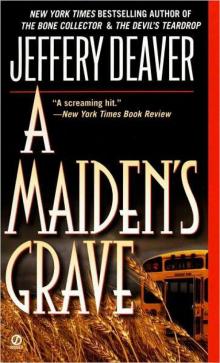 A Maiden's Grave
A Maiden's Grave Trouble in Mind: The Collected Stories - 3
Trouble in Mind: The Collected Stories - 3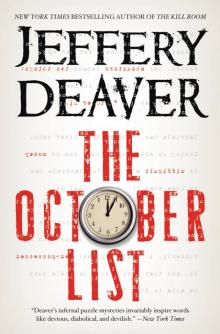 The October List
The October List The Deliveryman
The Deliveryman Garden of Beasts
Garden of Beasts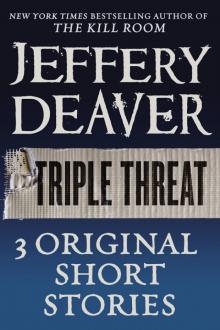 Triple Threat
Triple Threat The Broken Window
The Broken Window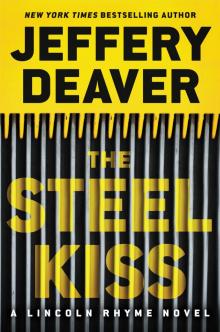 The Steel Kiss
The Steel Kiss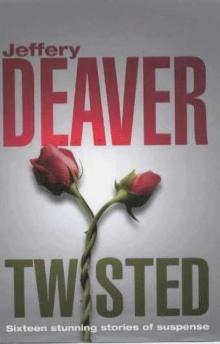 Twisted: The Collected Stories - 1
Twisted: The Collected Stories - 1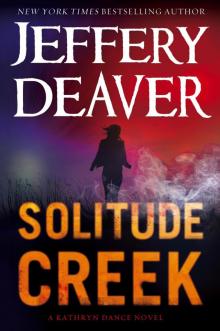 Solitude Creek
Solitude Creek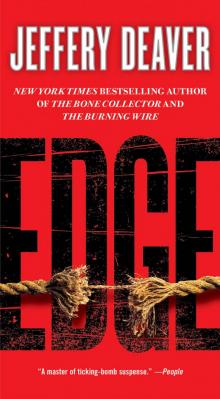 Edge
Edge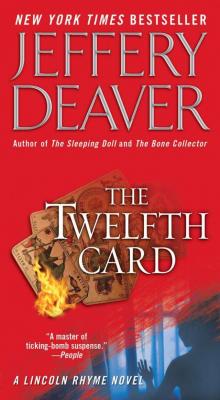 The Twelfth Card
The Twelfth Card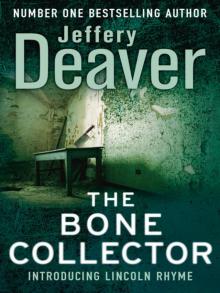 The Bone Collector
The Bone Collector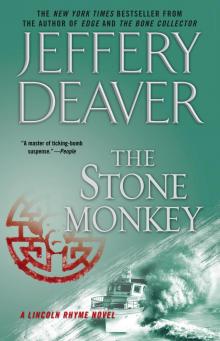 The Stone Monkey
The Stone Monkey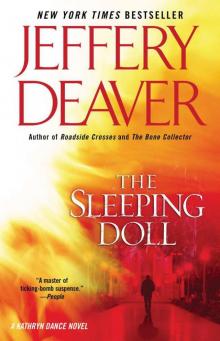 The Sleeping Doll
The Sleeping Doll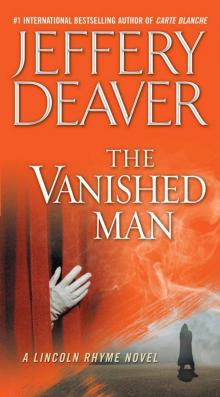 The Vanished Man
The Vanished Man The Kill Room
The Kill Room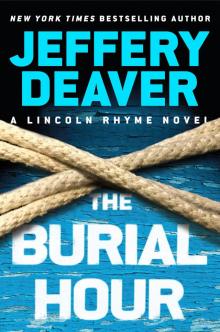 The Burial Hour
The Burial Hour An Acceptable Sacrifice
An Acceptable Sacrifice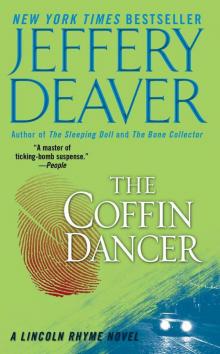 The Coffin Dancer
The Coffin Dancer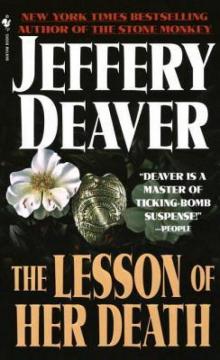 The Lesson of Her Death
The Lesson of Her Death The Empty Chair
The Empty Chair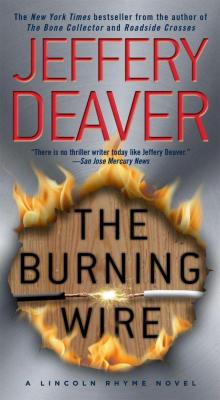 The Burning Wire
The Burning Wire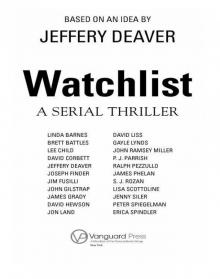 Watchlist
Watchlist Captivated
Captivated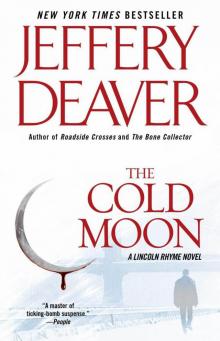 The Cold Moon
The Cold Moon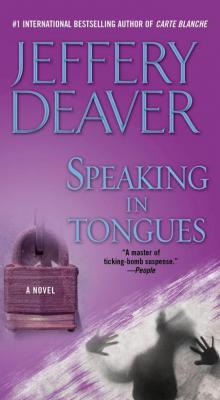 Speaking in Tongues
Speaking in Tongues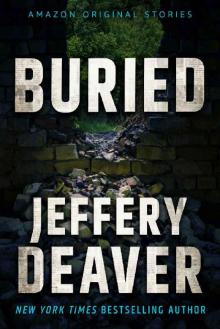 Buried (Hush collection)
Buried (Hush collection)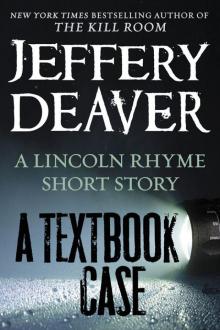 A Textbook Case
A Textbook Case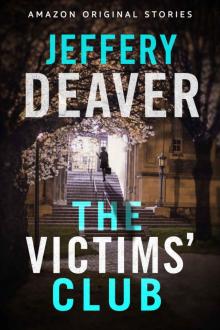 The Victims' Club
The Victims' Club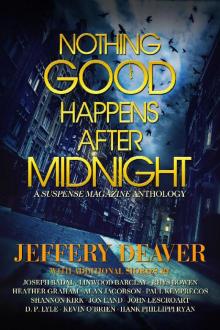 Nothing Good Happens After Midnight: A Suspense Magazine Anthology
Nothing Good Happens After Midnight: A Suspense Magazine Anthology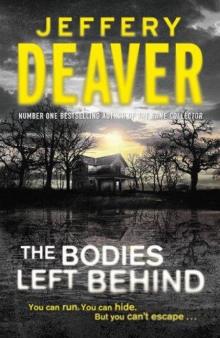 The Bodies Left Behind
The Bodies Left Behind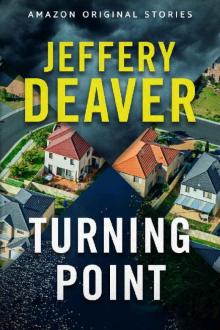 Turning Point
Turning Point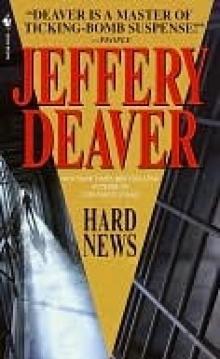 Hard News
Hard News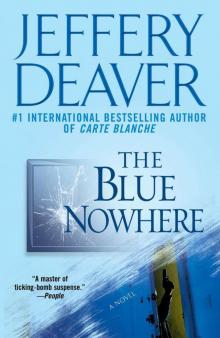 The Blue Nowhere
The Blue Nowhere The Second Hostage
The Second Hostage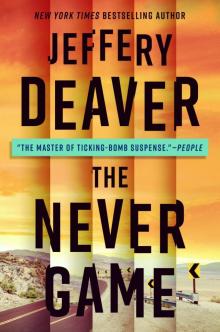 The Never Game
The Never Game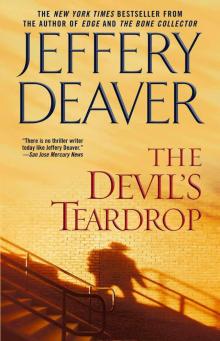 The Devil's Teardrop
The Devil's Teardrop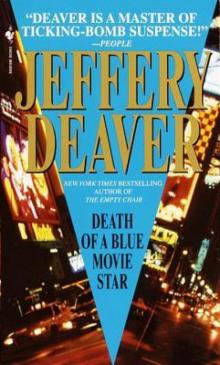 Death of a Blue Movie Star
Death of a Blue Movie Star The Skin Collector
The Skin Collector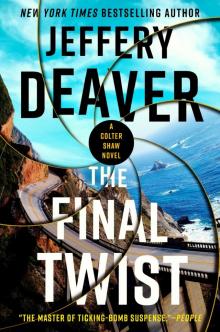 The Final Twist
The Final Twist Surprise Ending
Surprise Ending Twisted: The Collected Stories
Twisted: The Collected Stories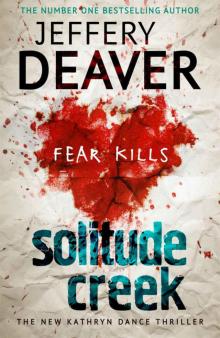 Solitude Creek: Kathryn Dance Book 4
Solitude Creek: Kathryn Dance Book 4 Twisted: The Collected Short Stories of Jeffery Deaver
Twisted: The Collected Short Stories of Jeffery Deaver Rhymes With Prey
Rhymes With Prey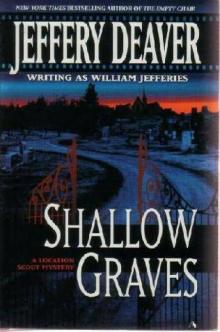 Shallow Graves
Shallow Graves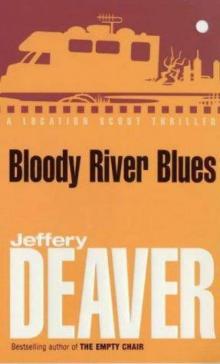 Bloody River Blues
Bloody River Blues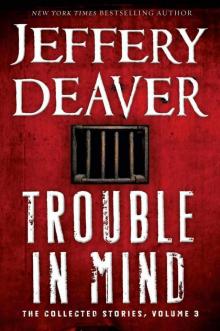 Trouble in Mind: The Collected Stories, Volume 3
Trouble in Mind: The Collected Stories, Volume 3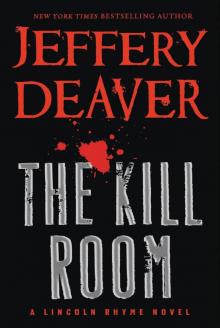 Lincoln Rhyme 10 - The Kill Room
Lincoln Rhyme 10 - The Kill Room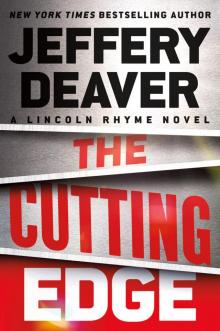 The Cutting Edge
The Cutting Edge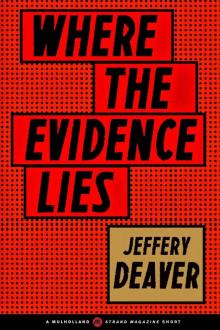 Where the Evidence Lies
Where the Evidence Lies Hell's Kitchen
Hell's Kitchen Twisted
Twisted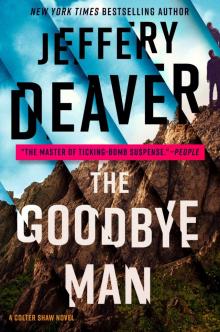 The Goodbye Man
The Goodbye Man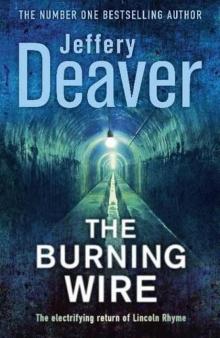 The burning wire lr-9
The burning wire lr-9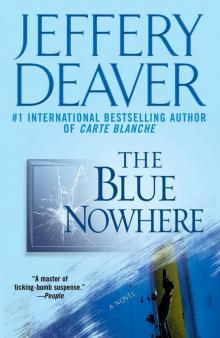 The Blue Nowhere: A Novel
The Blue Nowhere: A Novel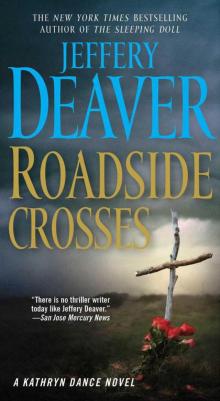 Roadside Crosses: A Kathryn Dance Novel
Roadside Crosses: A Kathryn Dance Novel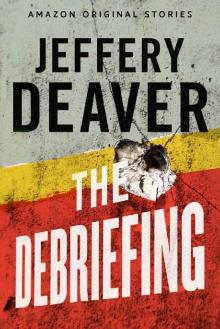 The Debriefing
The Debriefing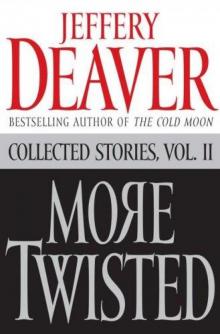 More Twisted: Collected Stories, Vol. II
More Twisted: Collected Stories, Vol. II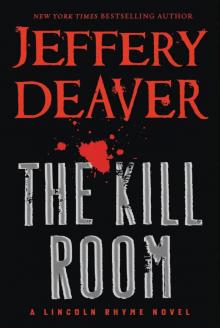 The Kill Room lr-10
The Kill Room lr-10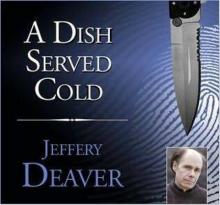 A Dish Served Cold
A Dish Served Cold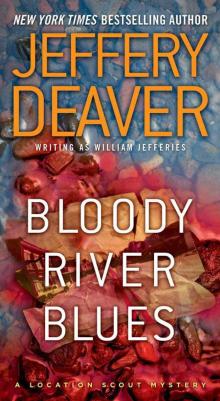 Bloody River Blues: A Location Scout Mystery
Bloody River Blues: A Location Scout Mystery The Bodies Left Behind: A Novel
The Bodies Left Behind: A Novel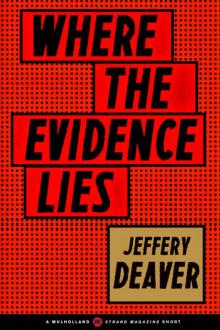 Where the Evidence Lies (A Mulholland / Strand Magazine Short)
Where the Evidence Lies (A Mulholland / Strand Magazine Short)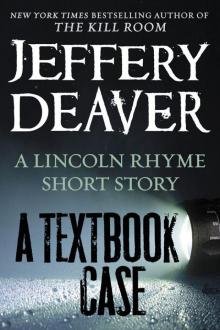 A Textbook Case (lincoln rhyme)
A Textbook Case (lincoln rhyme)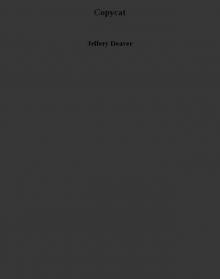 Copycat
Copycat The Chopin Manuscript: A Serial Thriller
The Chopin Manuscript: A Serial Thriller Carte Blanche
Carte Blanche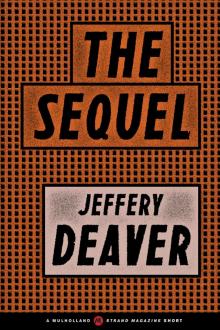 The Sequel
The Sequel